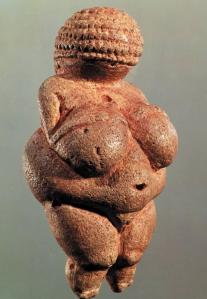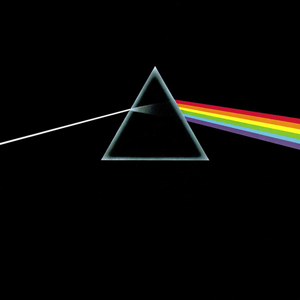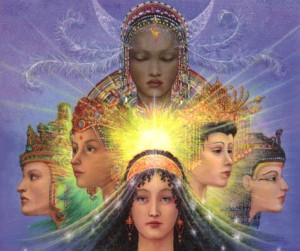In Filianism, there are seven main planetary powers that are known as the Seven Great Janyati (which may be translated as either Angel or Goddess). Mr. Race Capet, who authored the wonderful Wikipedia page on Filianism, gives the following explanation regarding the Seven Great Janyati:
The Great Janyati form the core of Filianic angelology. Each is associated with a virtue, a color, a musical note, a metal, a planet, and a day of the week, and together their system of correspondences encompasses all being under their combined jurisdiction. Each is considered not merely to represent, but to be the underlying metaphysical essence that forms the basis of her aspect of manifestation; they are the essential content by which all worldly forms are shaped.
In Filianic Scripture, the Janyati are compared to the splitting of white light through a prism, creating a plethora of rainbow colour that are created from the original white light and yet are at the same time still a part of this light, as found in the following passage from the Holy Mythos:
1. As the rain fell, the light came again, and a rainbow appeared in the sky, shedding its light upon all things.” (1:3:1)
In many way, the Janyati are similar to the seven planetary powers in Classical astrology, and indeed each Janya has Her own corresponding planetary body and attributes over which She rules. The earliest recorded Greek creation myth describes the creation of the world by the Goddess Eurynome, including Her creation of the Janyati:
Next, the goddess created the seven planetary powers, setting a Titaness and a Titan over each. Theia and Hyperion for the Sun; Phoebe and Atlas for the Moon; Dione and Crius for the planet Mars; Metis and Coeus for the planet Mercury; Themis and Eurynmedon for the planet Jupiter; Tethys and Oceanus for Venus; Rhea and Cronus for the planet Saturn.
One may take note here that the seven planetary powers in the Greek myth were created in pairs of male and female. Many in the Filianic community argue that the seven planetary powers were originally all-female and that later were given consorts during the patriarchal era. These male consorts were later given complete dominion over their respective domains. This view is supplemented by much of the archaeological scholarship produced by Marija Gimbutas and reported by Merlin Stone in her ground-breaking book, “When God was a Woman”, as well as earlier theories on ancient matriarchal religion by Robert Graves and Jane Ellen Harrison. The idea of universal matriarchy and Goddess religion in the ancient world is highly disputed in modern archaeology, but evidence found to support the theory is intriguing.
 In Filianism, different traditions (Matronite, Kyrian, Madrian, Cheoluranyan, etc.) have different names for the Janya, but every tradition recognizes the same universal principles that each Janya represents. For example, whether one calls the Janya ruling over Venus Sai Sushuri, Lady Grace, Kyria Tethys, or something different altogether, She is still the same Janya who rules over the Universal Principle of Love.
In Filianism, different traditions (Matronite, Kyrian, Madrian, Cheoluranyan, etc.) have different names for the Janya, but every tradition recognizes the same universal principles that each Janya represents. For example, whether one calls the Janya ruling over Venus Sai Sushuri, Lady Grace, Kyria Tethys, or something different altogether, She is still the same Janya who rules over the Universal Principle of Love.
There is no single correct way to worship Dea, although the basic religious framework of Filianism prevents the sort of wishy washy eclecticism that undermines modern Paganism. Much like Hindus who may approach Brahman (Ultimate Reality) through Durga, Shiva, Vishnu, etc., Filyanis also may approach Dea through the Janya. One can approach Dea in any number of ways depending upon one’s personal preferences and inclinations. An archived Aristasian article relates several different devotions to Dea and comments on these devotions with the following view on religious difference within our community:
Now none of these are “different religions” in the Western sense, or even opposing sects. They are simply different Ways. Do they all agree on anything? Yes. They all agree that there is one supreme Spirit, our Mother, who is everywhere called Dea (or Dia). And furthermore— and this is important — they disagree (in the Western way) on nothing. No one disputes that the other Ways are Ways. No one “disbelieves” in another’s view of Dea…In the first place, we are all agreed that there is one Spirit, one God, one Dea. That is the one fundamental. Dea: our Heavenly Mother. After that there are different Ways. The simplest is just a belief in, and love of, Dea.
This is something I especially find comforting, as I struggled with this idea for years. I have always believed in a single Supreme Spiritual Power, but felt drawn to worship this Supreme Power through a variety of more personable, tangible Goddesses from a variety of pantheons, from Isis to Kuan Yin. I could not sum up my devotions into any sort of existing religious organization, so I defined myself as an eclectic Pagan. Eclectic Pagans receive quite a bit of hate from other Pagans who belong to well-established traditions, like Reconstructionists who accuse eclectics of stealing gods from different cultures and worshiping them outside of their original context. I could not consolidate my devotion to these different aspects of Dea that I felt called to into a framework that made sense to me (and certainly not anyone else), and so my religious ideas became more and more convoluted as I struggled with my identity and personal beliefs. When I first learned about Filianism through the Chapel of Our Mother God site, I saw that Filyanis saw Dea in many different forms, including Mary who I had always felt great love for but did not include in my worship as an ex-Catholic. Through discovering Filianism, I have found a religion through which I can worship my Mother in an authentic, traditional manner while also being able to learn from Her through the many Ways She has revealed Herself to people throughout the ages and around the world.
 In conclusion, the concept of planetary powers may be confusing to the modern rationalist mind. Common misconceptions regarding Janyati are perfectly summed up the following passage from an archived Aristasian article:
In conclusion, the concept of planetary powers may be confusing to the modern rationalist mind. Common misconceptions regarding Janyati are perfectly summed up the following passage from an archived Aristasian article:
In the first place, let us be clear that the Janyati are not “forces” or “energies” conceived after the model of Newtonian physics (and dearly beloved of New Age movements). They are Intelligences. They are not people like us, it is true. But they are something more than people, not less than people. The greatest force in the universe is less than a person. It cannot think. We are speaking here of Intelligences immeasurably greater than ourselves. They have everything we people have, magnified a thousand times, and they have many qualities we cannot even conceive of. To picture them as something akin to people may not do them justice, but to picture them as something impersonal, like a force of nature, would do them infinitely less justice. They are everything we are and much more.
In the second place, let us remember that we are dealing with an intelligent, not an accidental, universe. The things below mirror the things above. The microcosm reflects the macrocosm. While the Janyati are very different from us, they nonetheless have a common measure with us. Just as we are made in God’s image, so are they. Indeed they are far closer to the Dea-nature than we are, and in a sense, we may say that each Janya is Dea, in a certain aspect. That is why the translation “goddess” is in some sense as appropriate as “angel”.
It must also be made clear that we as Filyanis do not worship the planetary bodies themselves. Rather, they serve as material symbols for higher spiritual principles.
Resources:
http://www.mother-god.com/goddess-religion.html
http://aristasia.info/janyati.html
http://aristasia.info/janyati2.html
http://aristasia.info/Religion.html
http://en.wikipedia.org/wiki/Janya_%28Filianism%29
http://www.mythome.org/euor.html


